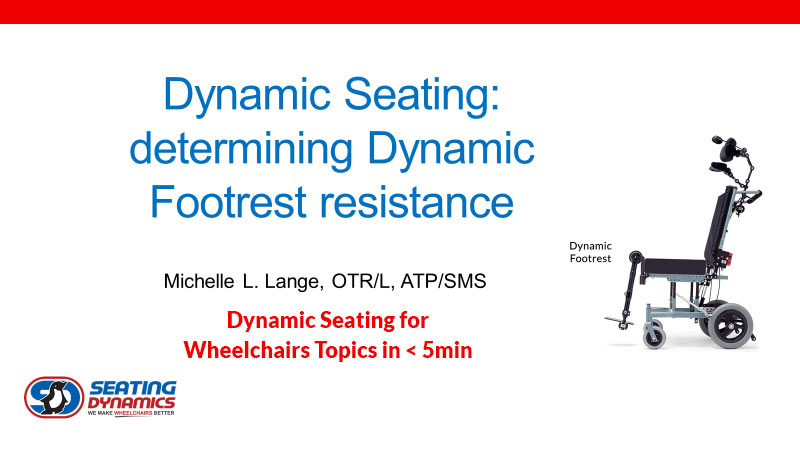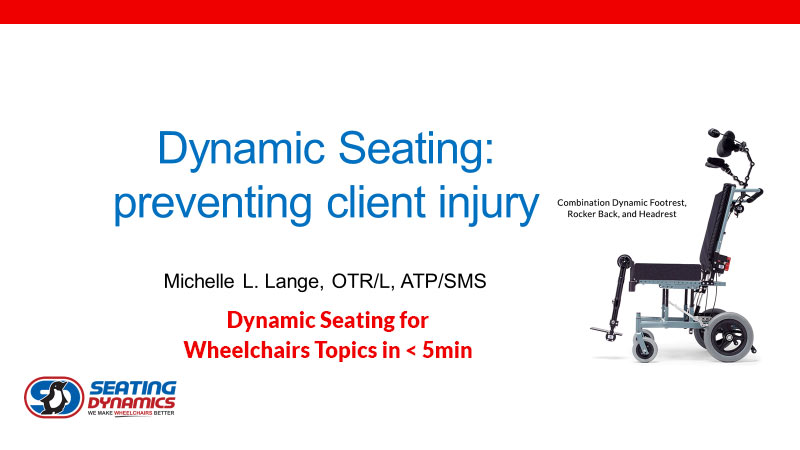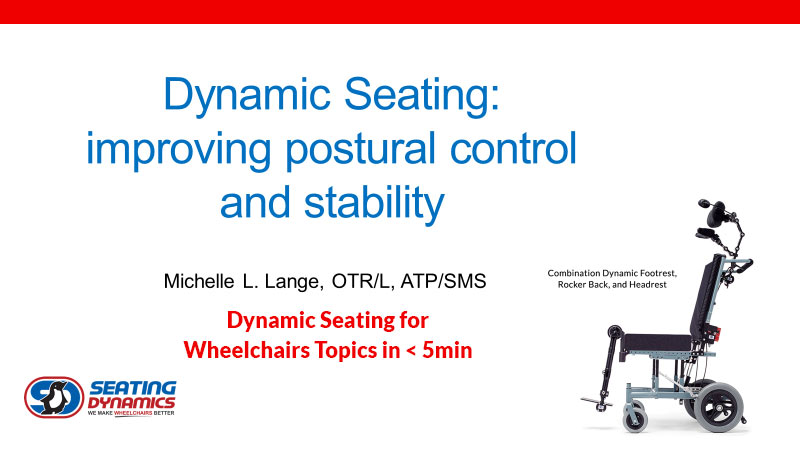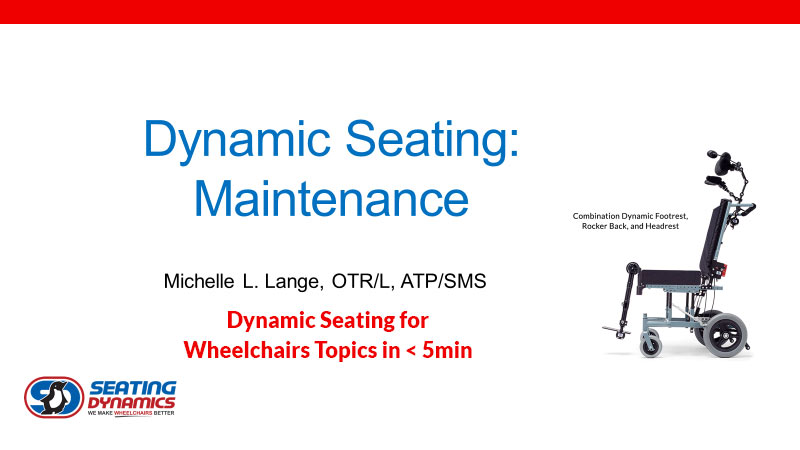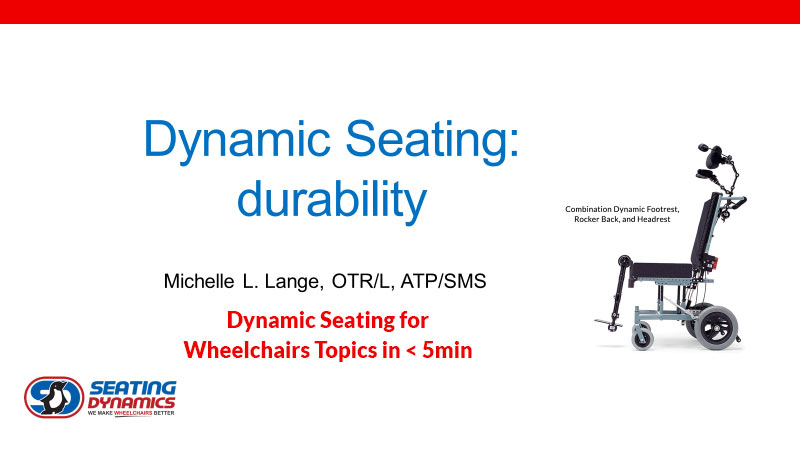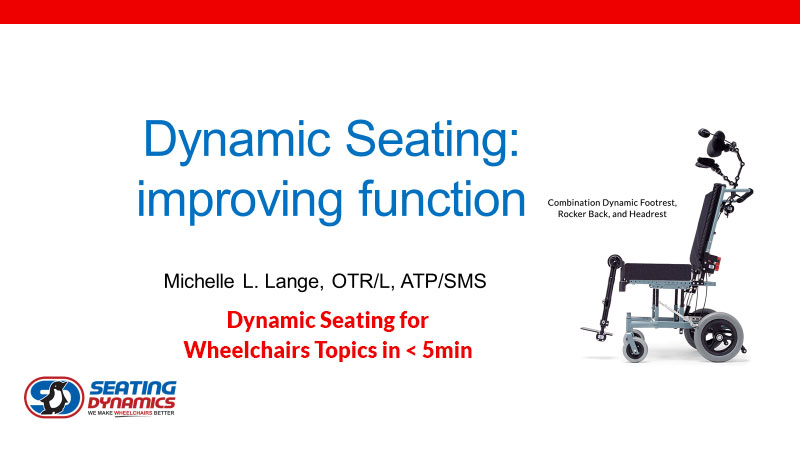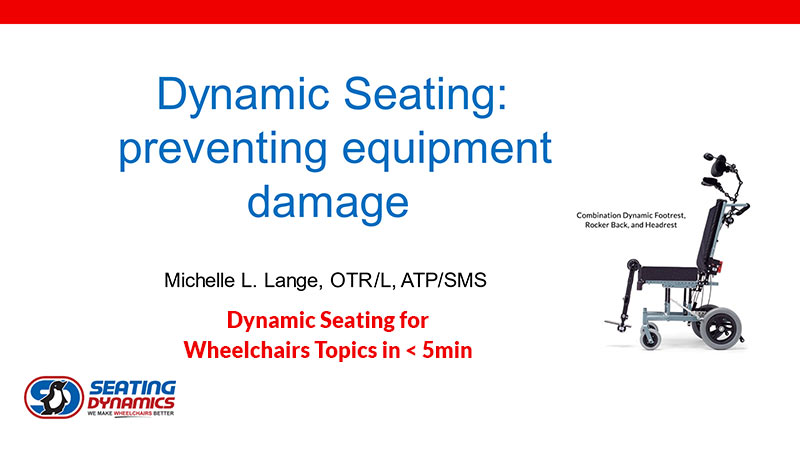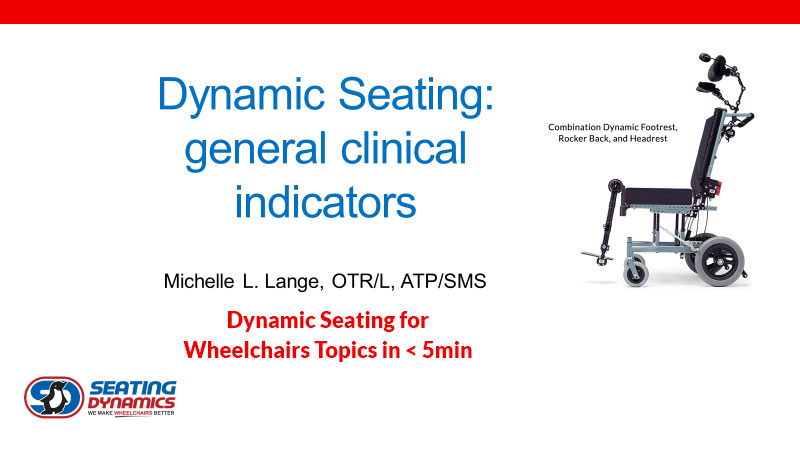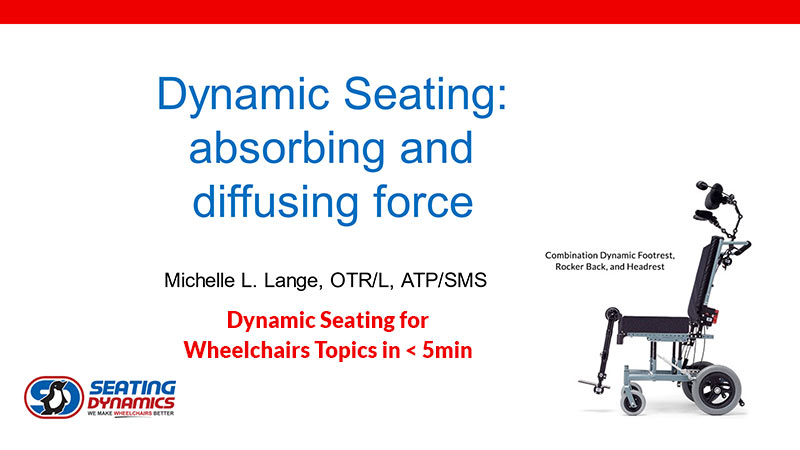Quick Class: Dynamic Seating – Footrest Resistance
The optimal level of resistance is critical to the functioning of Dynamic Footrests. In this Quick Class, we will review how to determine resistance at the telescoping and elevating features.
Quick Class: Dynamic Seating – Preventing Client Injury
Dynamic Seating can assist with preventing client injury for those who exert sustained or intermittent force against seating components. These forces can lead to pain, joint and bone injuries, and possibly even concussions. Dynamic Seating absorbs forces, preventing these injuries.
Quick Class: Dynamic Seating – Improving Postural Control and Stability
Dynamic seating provides resistance to movement initiated by the wheelchair user, usually through spring or elastomer type mechanisms or other resistive, but mobile components. Movement against resistance has been demonstrated to increase strength in people with increased muscle tone without an increase in spasticity. Increased muscle strength can, in turn, improve both postural control and functioning.
Quick Class: Dynamic Seating – Maintenance
Most items need a certain level of maintenance. What about Dynamic Seating components? The answer is, “Yes!” All that force and movement will, eventually, wear down the elastomers. Depending on the degree of force and frequency of movement, the elastomers may have to be changed more frequently for some clients than for others.
Quick Class: Dynamic Seating – Durability
Dynamic Seating is often used to prevent equipment breakage, specifically the wheelchair frame and seating system. The Dynamic components absorb strong, repeated, sudden, and/or sustained forces, hence protecting vulnerable areas of the seating and mobility base. But what about the Dynamic Components themselves? Just how durable are these?
Quick Class: Dynamic Seating – Improving Function
Dynamic Seating can improve function, including medical functioning. This Quick Class reviews specifics supported by research.
Quick Class: Dynamic Seating – Allowing Movement
Dynamic Seating moves in response to client forces. Many clients move, not due to increased extensor tone, but rather for the explicit purpose of moving. We all tend to seek out movement. We are wired to move, and movement has so many benefits.
Quick Class: Dynamic Seating – Preventing Equipment Damage
The forces from extension on a static wheelchair seat and frame can be so strong as to cause damage to equipment. Hardware used to mount the seating system and components (such as a head support), are particularly susceptible to damage.
Quick Class: Dynamic Seating – General Clinical Indicators
Dynamic seating has many potential applications. Dynamic components absorb and diffuse force, protecting the wheelchair user from injury caused by sustained and/or repeated forces and reducing damage to the seating system and wheelchair.
Quick Class: Dynamic Seating – Absorbing and Diffusing Force
Many clients using wheelchair seating have increased muscle tone. This can lead to active extension, particularly at the hips, knees, and neck.

